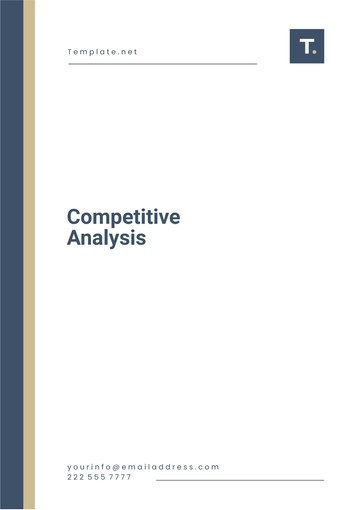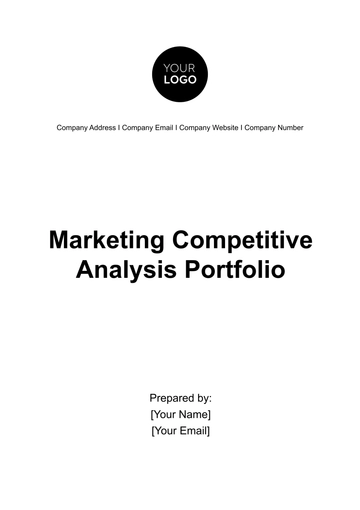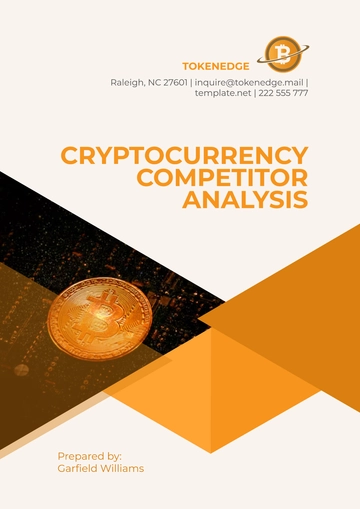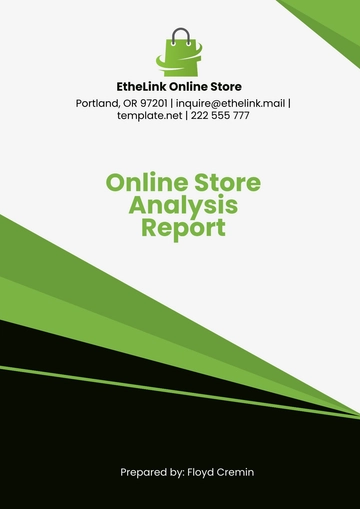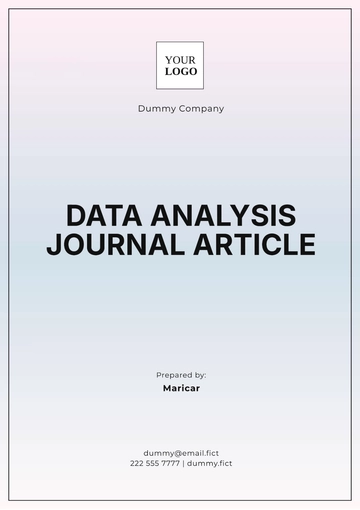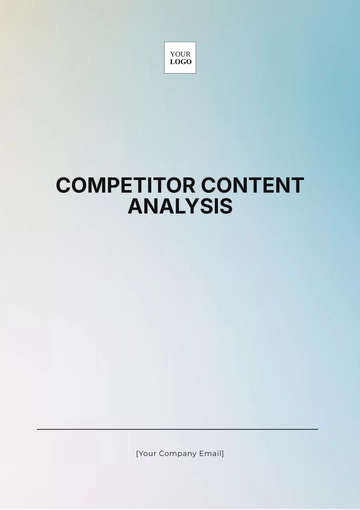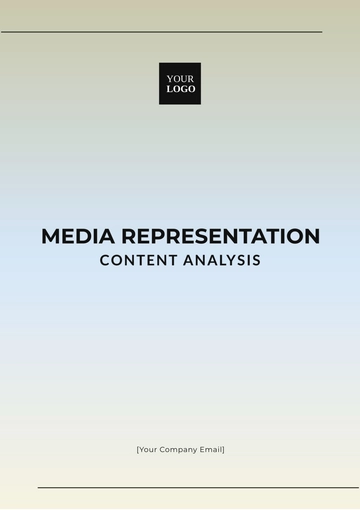Free Hotel Competitive Analysis

I. Executive Summary
In 2057, [Your Company Name] faced a highly competitive market landscape characterized by rapid technological advancements and shifting consumer preferences. The analysis reveals that our hotel maintained a strong market position, driven by superior customer service, advanced amenities, and strategic location. Total revenue for the year reached $30,000,000, reflecting a 10% increase compared to 2056. Occupancy rates averaged 85%, demonstrating our continued ability to attract and retain guests.
Key competitors, including Hotel Lux, Urban Retreat, and Eco Lodge, implemented aggressive marketing strategies and expanded their service offerings. Despite these challenges, [Your Company Name] retained a competitive edge through targeted marketing campaigns and a focus on personalized guest experiences. Additionally, our investment in sustainable practices and smart technology solutions has resonated well with environmentally conscious travelers.
Looking ahead, [Your Company Name] aims to further strengthen its market position by enhancing its digital presence, expanding loyalty programs, and continuing to invest in sustainable initiatives. The competitive analysis underscores the importance of innovation and customer-centric strategies in maintaining and growing market share in the evolving hospitality industry.
II. Introduction
A. Objectives
To analyze the competitive landscape and identify key trends affecting the hotel industry. This involves understanding market dynamics and how they influence our positioning. Keeping abreast of trends helps us stay competitive and anticipate changes.
To evaluate the strengths and weaknesses of [Your Company Name] relative to major competitors. This evaluation provides insight into areas where we excel and where we need improvement. It forms the basis for strategic planning and resource allocation.
To identify opportunities for growth and areas for improvement. Recognizing growth opportunities helps in strategic decision-making. Addressing areas for improvement ensures we remain competitive and meet guest expectations.
To assess the impact of technological advancements and sustainability practices on the competitive landscape. These factors are increasingly influencing guest choices. Understanding their impact helps in aligning our strategies with market demands.
To provide recommendations for enhancing [Your Company Name]'s competitive position. These recommendations are based on the analysis and are aimed at driving growth and profitability. Implementing them can help us achieve our strategic goals.
B. Scope
The analysis covers the competitive landscape of the hotel industry in 2057. This includes an assessment of major competitors and market trends. Focusing on the current year provides relevant insights for immediate strategic planning.
It examines both qualitative and quantitative data, including financial performance, occupancy rates, and guest satisfaction metrics. Combining qualitative and quantitative data gives a comprehensive view of our performance. It helps in understanding the reasons behind the numbers.
The report includes a comparative analysis of [Your Company Name] and its key competitors: Hotel Lux, Urban Retreat, and Eco Lodge. This comparison highlights our relative strengths and weaknesses. It helps in identifying best practices and areas for improvement.
Technological advancements and sustainability practices are evaluated to understand their impact on competitive positioning. These factors are becoming crucial in the hospitality industry. Evaluating their impact helps in aligning our strategies with market trends.
Recommendations are provided based on the analysis to enhance [Your Company Name]'s market position. These recommendations are actionable and aimed at driving growth. They are based on insights gained from the competitive analysis.
C. Importance
Understanding the competitive landscape is crucial for strategic planning and decision-making. It provides the context needed for making informed decisions. This understanding helps in setting realistic and ambitious goals.
The report helps in identifying key strengths and weaknesses relative to competitors. Knowing our strengths allows us to leverage them effectively. Identifying weaknesses helps in addressing them proactively.
It provides insights into market trends and consumer preferences. These insights are essential for staying relevant in a dynamic market. They help in tailoring our offerings to meet guest expectations.
The analysis highlights opportunities for growth and areas for improvement. Recognizing these opportunities can lead to strategic initiatives that drive growth. Addressing areas for improvement ensures continuous enhancement of guest experiences.
The recommendations offer a roadmap for enhancing competitive positioning and achieving business objectives. Implementing these recommendations can lead to improved performance and profitability. They provide a clear path towards achieving our strategic goals.
III. Competitive Landscape
A. Key Competitors
The following table provides a comparative overview of key financial and operational metrics for our main competitors. This data helps in understanding the competitive positioning and identifying areas for strategic improvements:
Competitor | Total Revenue | Occupancy Rate | Average Daily Rate | Market Share |
|---|---|---|---|---|
Hotel Lux | $28,000,000 | 80% | $200 | 25% |
Urban Retreat | $22,000,000 | 78% | $180 | 20% |
Eco Lodge | $18,000,000 | 75% | $170 | 15% |
[Your Company Name] | $30,000,000 | 85% | $220 | 30% |
Hotel Lux: With a total revenue of $28,000,000 and an occupancy rate of 80%, Hotel Lux holds a significant market share. Their average daily rate of $200 indicates a strong pricing strategy. However, our higher occupancy rate and total revenue demonstrate our superior market position. Focusing on maintaining competitive pricing and enhancing guest experience can further solidify our lead.
Urban Retreat: Generating $22,000,000 in revenue with a 78% occupancy rate, Urban Retreat shows strong performance in the mid-tier segment. Their lower average daily rate of $180 suggests a value-driven approach. To compete effectively, we must emphasize our premium services and unique offerings that justify our higher pricing.
Eco Lodge: Known for its sustainability practices, Eco Lodge achieved $18,000,000 in revenue and a 75% occupancy rate. Their market share reflects a growing trend towards eco-friendly accommodations. Investing in sustainability initiatives can attract environmentally conscious travelers and enhance our competitive advantage.
While competitors have distinct strengths, [Your Company Name] excels in both revenue generation and occupancy rates. This indicates a well-rounded approach to pricing, service quality, and customer satisfaction. To maintain and enhance our competitive edge, we should continue to innovate and adapt to changing market conditions.
B. Market Trends
Increased Demand for Sustainable Practices: There is a growing preference for hotels that implement eco-friendly practices. Guests are increasingly aware of their environmental impact and choose accommodations that reflect their values. Embracing sustainability can enhance our brand reputation and attract a broader audience.
Technological Advancements: Smart hotel technologies, such as keyless entry, automated check-ins, and personalized digital experiences, are becoming standard expectations. Investing in these technologies can improve operational efficiency and guest satisfaction, giving us a competitive advantage.
Rise of Experiential Travel: Travelers are seeking unique and immersive experiences rather than just a place to stay. Offering curated experiences, local tours, and personalized services can differentiate us from competitors and create memorable stays for guests.
Health and Wellness Focus: Post-pandemic, there is an increased emphasis on health and wellness. Incorporating wellness amenities such as fitness centers, spas, and healthy dining options can meet this growing demand and enhance guest satisfaction.
C. Technological Innovations
Artificial Intelligence (AI) and Machine Learning: These technologies are being used to analyze guest preferences and provide personalized recommendations. Implementing AI can enhance the guest experience by offering tailored services and anticipating needs.
Internet of Things (IoT): IoT devices allow for seamless connectivity and automation within hotel rooms. Smart lighting, climate control, and entertainment systems can create a more comfortable and convenient stay for guests.
Virtual Reality (VR) and Augmented Reality (AR): VR and AR can enhance marketing efforts by providing virtual tours of the hotel and surrounding areas. These technologies can also be used to enhance in-room experiences and offer interactive elements.
Blockchain for Secure Transactions: Blockchain technology can provide secure and transparent transactions, enhancing trust with guests. It can also streamline payment processes and reduce the risk of fraud.
Mobile Integration: Mobile apps that integrate booking, check-in, room service, and concierge services offer a seamless experience. Enhancing our mobile offerings can increase convenience and improve guest satisfaction.
D. Consumer Preferences
Personalization: Guests expect personalized experiences tailored to their preferences. Utilizing data analytics to understand guest behaviors and preferences can help in creating customized experiences that enhance satisfaction.
Convenience: The demand for convenience is high, with guests preferring hotels that offer seamless booking, check-in, and service processes. Streamlining these processes through technology can improve efficiency and guest satisfaction.
Safety and Hygiene: Post-pandemic, there is a heightened focus on safety and hygiene standards. Ensuring rigorous cleanliness protocols and communicating them effectively can build trust and attract health-conscious travelers.
Value for Money: While luxury remains attractive, guests are also seeking value for their money. Offering competitive pricing and value-added services can appeal to a broader range of guests.
Local Experiences: Travelers are increasingly interested in local culture and experiences. Collaborating with local businesses and offering curated experiences can provide unique value and attract experiential travelers.
IV. Financial Performance
A. Revenue Analysis
The following chart and table summarize the financial performance, highlighting the revenue contribution from different sources. This data helps in understanding our financial health and areas contributing significantly to our revenue:
Revenue Source | Amount | Percentage of Total Revenue |
|---|---|---|
Room Revenue | $18,000,000 | 60% |
Food and Beverage | $7,000,000 | 23.3% |
Events and Conferences | $3,000,000 | 10% |
Other Services | $2,000,000 | 6.7% |
Room Revenue: Contributing 60% of the total revenue, room revenue remains the primary income source. The high occupancy rate of 85% reflects strong demand for our accommodations. Enhancing room features and maintaining high service standards can sustain this revenue stream.
Food and Beverage: Accounting for 23.3% of total revenue, the food and beverage segment plays a crucial role in overall profitability. Offering diverse dining options and exceptional culinary experiences can attract both hotel guests and external visitors, boosting revenue.
Events and Conferences: With 10% of total revenue coming from events and conferences, this segment presents significant growth potential. Expanding event spaces and offering state-of-the-art facilities can attract more business clients and large gatherings.
Other Services: Generating 6.7% of total revenue, other services include spa treatments, tours, and retail. Diversifying and promoting these services can enhance guest experiences and contribute to overall profitability.
Diversifying revenue streams can mitigate risks associated with dependency on a single income source. By focusing on enhancing and promoting various services, [Your Company Name] can achieve a balanced and sustainable financial performance.
B. Cost Analysis
Labor Costs: Labor remains the largest expense, accounting for 40% of total operational costs. Investing in staff training and optimizing workforce management can improve efficiency and reduce costs while maintaining high service standards.
Maintenance and Utilities: Representing 20% of total costs, maintenance and utilities are essential for ensuring guest comfort and safety. Implementing energy-efficient systems and regular maintenance schedules can reduce these expenses over time.
Marketing and Sales: Marketing and sales expenses account for 15% of total costs. Effective marketing strategies and targeted campaigns can yield high returns on investment, attracting more guests and increasing occupancy rates.
Food and Beverage Costs: Making up 10% of total expenses, food and beverage costs need careful management to maintain profitability. Sourcing local and seasonal ingredients can reduce costs and enhance menu appeal.
V. Customer Satisfaction
A. Guest Feedback
The following table provides an overview of guest feedback scores across various metrics. Understanding guest satisfaction levels helps in identifying areas of strength and areas needing improvement:
Metric | Score (Out of 5) |
|---|---|
Overall Satisfaction | 4.5 |
Cleanliness | 4.7 |
Service Quality | 4.6 |
Amenities | 4.4 |
Value for Money | 4.3 |
Overall Satisfaction: A score of 4.5 indicates high overall guest satisfaction. This reflects our ability to meet and exceed guest expectations consistently. Maintaining high satisfaction levels is crucial for repeat business and positive word-of-mouth.
Cleanliness: Scoring 4.7, cleanliness is one of our top-rated aspects. Rigorous cleaning protocols and well-maintained facilities contribute to this high score. Ensuring consistent cleanliness standards is essential for guest trust and comfort.
Service Quality: With a score of 4.6, service quality is another strong point. Excellent customer service is key to guest satisfaction and loyalty. Continuous staff training and a focus on personalized service can further enhance this metric.
Amenities: A score of 4.4 for amenities indicates that guests are generally satisfied but there is room for improvement. Expanding and upgrading amenities can enhance the guest experience and attract more visitors.
Value for Money: Scoring 4.3, value for money is an important factor for guests. Offering competitive pricing and value-added services can improve this score and attract budget-conscious travelers.
Focusing on maintaining high standards in cleanliness and service quality while improving amenities can lead to higher overall satisfaction. This, in turn, can drive repeat business and positive reviews, enhancing our competitive position.
B. Loyalty Programs
Membership Growth: The loyalty program saw a 15% increase in membership in 2057, reflecting its popularity. Expanding program benefits and promoting membership can attract more loyal guests and increase repeat stays.
Reward Redemption: A high rate of reward redemption indicates active engagement with the program. Offering diverse and attractive rewards can maintain high engagement levels and encourage repeat business.
Guest Retention: Loyalty program members showed a 20% higher retention rate compared to non-members. This underscores the importance of loyalty programs in fostering guest loyalty and increasing lifetime value.
Program Satisfaction: Surveys indicate a high satisfaction rate of 4.6 out of 5 for the loyalty program. Continuously enhancing program features and listening to member feedback can maintain high satisfaction and drive membership growth.
VI. Marketing Strategies
A. Digital Marketing
Social Media Campaigns: Leveraging social media platforms to engage with guests and promote offers. Regularly updating content and interacting with followers can increase brand visibility and attract new guests.
Email Marketing: Sending personalized emails with special offers and updates to our mailing list. Effective email marketing can drive bookings and keep guests informed about new services and promotions.
Search Engine Optimization (SEO): Optimizing our website for search engines to increase organic traffic. High search engine rankings can enhance online visibility and attract more potential guests.
Pay-Per-Click (PPC) Advertising: Utilizing PPC ads to target specific demographics and drive traffic to our website. Strategic PPC campaigns can yield high returns on investment by attracting high-intent visitors.
B. Traditional Marketing
Print Advertising: Placing ads in travel magazines and local publications to reach a broader audience. Print advertising can complement digital efforts and attract guests who prefer traditional media.
Billboards: Using billboards in high-traffic areas to increase brand awareness. Eye-catching billboards can capture the attention of passersby and drive bookings.
Partnerships with Travel Agencies: Collaborating with travel agencies to promote our hotel. Partnerships can expand our reach and attract guests through trusted travel advisors.
Event Sponsorships: Sponsoring local events to increase visibility and engage with the community. Event sponsorships can enhance brand recognition and showcase our commitment to the local area.
VII. Conclusion
The competitive analysis for [Your Company Name] in 2057 highlights our strong market position amidst a dynamic and challenging landscape. Our focus on superior service, advanced amenities, and strategic marketing has enabled us to achieve significant revenue growth and high occupancy rates. The analysis underscores the importance of continuous innovation, sustainability, and personalized guest experiences in maintaining a competitive edge.
Looking forward, [Your Company Name] is well-positioned to capitalize on emerging trends and opportunities. By enhancing our digital presence, expanding loyalty programs, and investing in sustainable practices, we can continue to attract and retain guests, driving further growth and profitability. The insights from this report provide a roadmap for strategic initiatives that will sustain our competitive advantage and ensure long-term success in the hospitality industry.
- 100% Customizable, free editor
- Access 1 Million+ Templates, photo’s & graphics
- Download or share as a template
- Click and replace photos, graphics, text, backgrounds
- Resize, crop, AI write & more
- Access advanced editor
Gain a comprehensive understanding of your market position with the Hotel Competitive Analysis Template available on Template.net! This editable template allows you to systematically compare your hotel against competitors. Its customizable features enable you to highlight specific metrics relevant to your business. Use the AI Editor Tool to fine-tune effortlessly!
